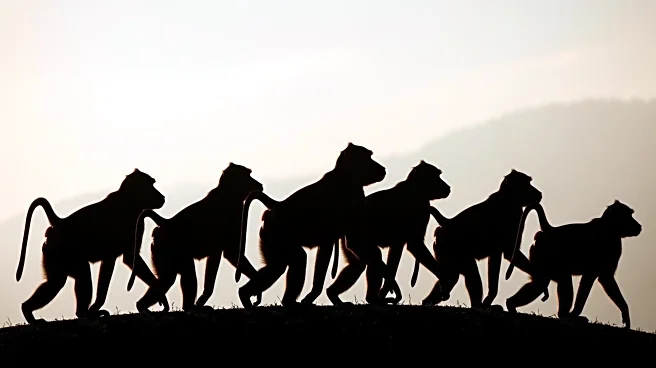What's Happening?
Researchers at Swansea University have uncovered the reason behind the organized marching patterns of chacma baboons on South Africa's Cape Peninsula. Using high-resolution GPS tracking, the team studied 78 travel progressions over 36 days, revealing that baboons march in order not for protection or resource competition, but due to social bonds. The study, published in Behavioral Ecology, tested four hypotheses: protecting the vulnerable, competing for resources, following leaders, and social relationships. The findings showed that baboons move in consistent order based on their social connections, with higher-ranking individuals often positioned in the middle of the group.
Why It's Important?
This discovery challenges previous assumptions about animal group movements, highlighting the significance of social bonds over strategic positioning for safety or resource access. Understanding these social dynamics can provide insights into the evolution of social behavior in animals, potentially influencing conservation strategies and animal behavior studies. The concept of 'social spandrels'—traits emerging as by-products of social relationships—may offer new perspectives on collective animal behavior, emphasizing the importance of social structures in wildlife management and research.
What's Next?
Further research may explore how these social bonds affect other aspects of baboon life, such as mating and survival rates. The study's findings could lead to broader investigations into social spandrels in other species, potentially reshaping approaches to studying animal behavior. Conservationists and researchers might consider these social dynamics when developing strategies for habitat preservation and species protection, ensuring that social structures are maintained in natural environments.
Beyond the Headlines
The concept of social spandrels introduces a new dimension to understanding animal behavior, suggesting that social bonds can lead to unintended yet consistent patterns. This could have implications for studying human social behavior, offering parallels in how social connections influence group dynamics and decision-making processes. The study underscores the complexity of social interactions in the animal kingdom, prompting a reevaluation of how social structures impact evolutionary processes.

